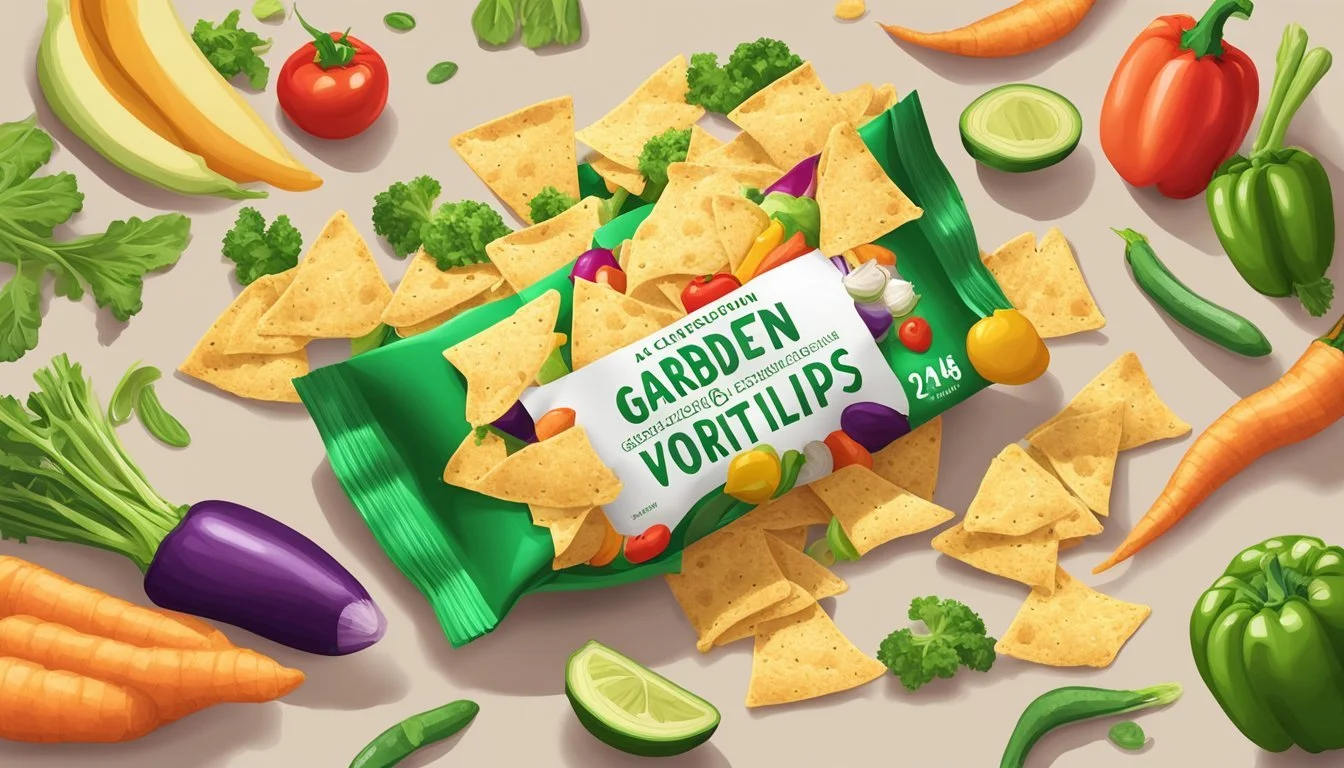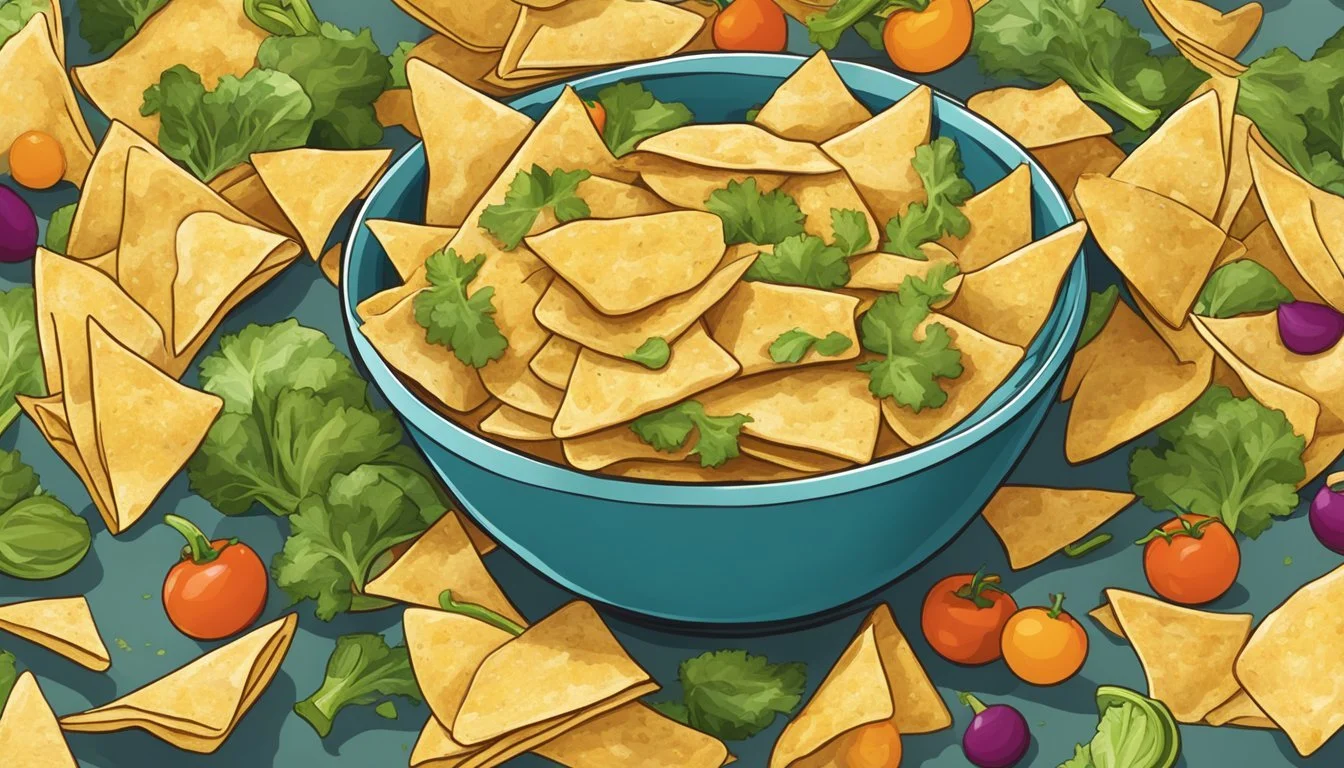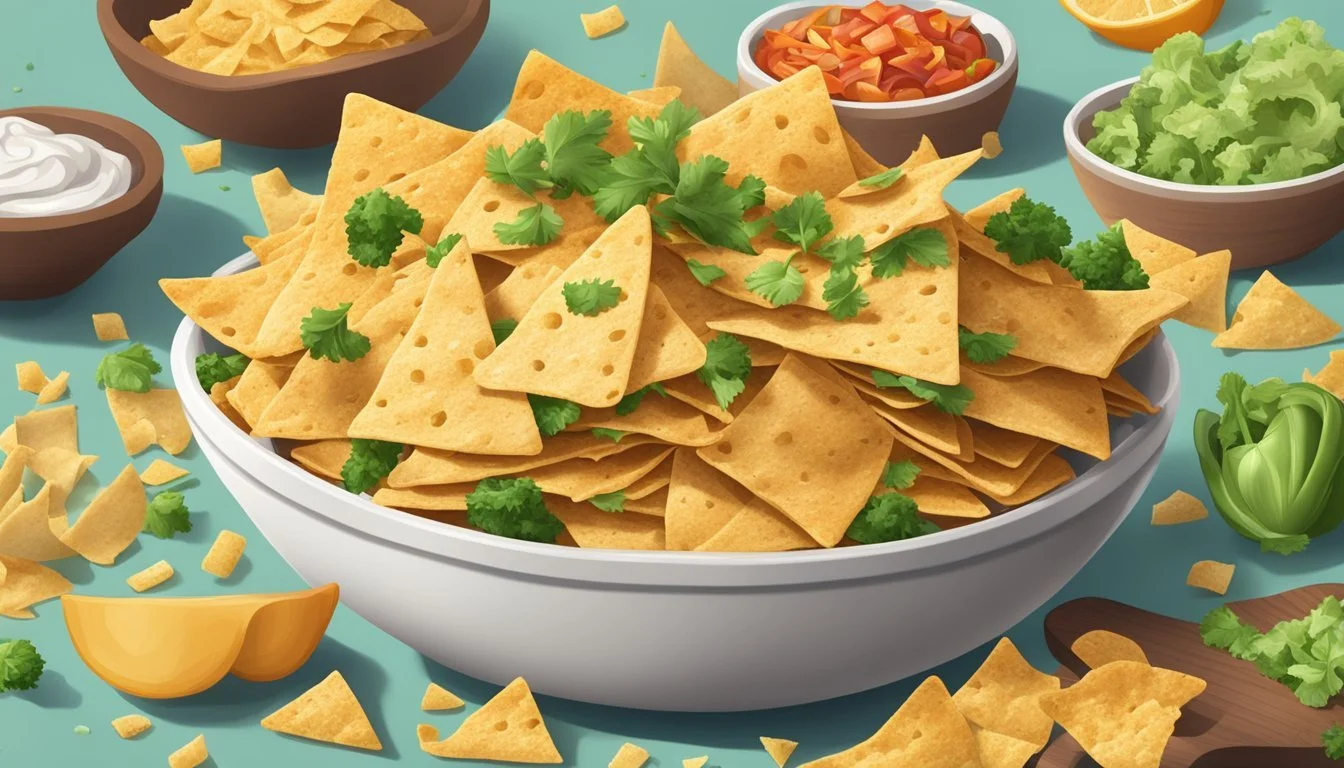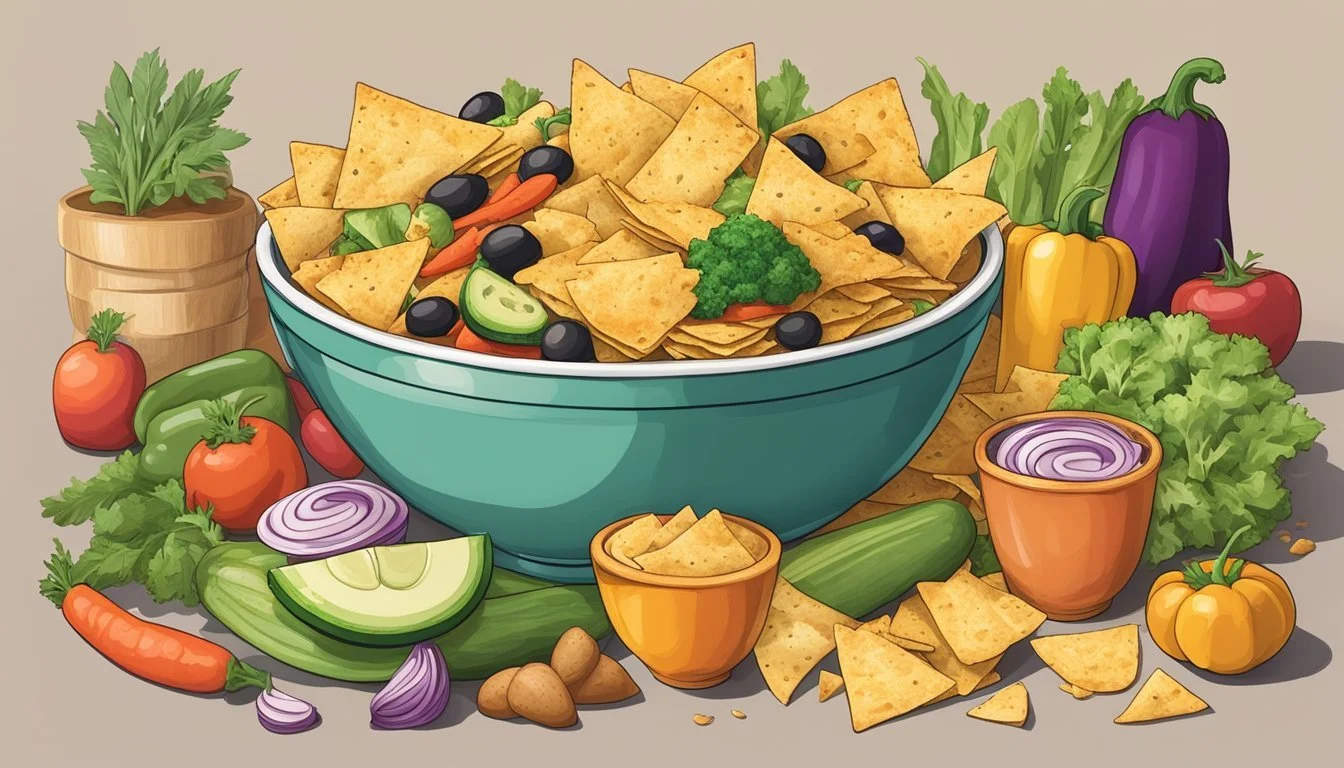How Many Servings of Garden Veggie Tortilla Chips Is Too Much
Understanding Moderation
When it comes to enjoying Garden Veggie Tortilla Chips, moderation is key. With many people seeking healthier snack alternatives, it's important to understand the appropriate serving sizes to avoid excessive consumption. Ideally, keeping snacks within the 100-200 calorie range is advisable, translating to about 1-2 servings of most snack chips.
A single serving of Garden Veggie Tortilla Chips typically contains around 140 calories, with nutritional components including 8 grams of fat, 180 milligrams of sodium, and 15 grams of carbohydrates. Consuming multiple servings can quickly add up to a significant calorie intake and increase the levels of fat and sodium in one’s diet. Being cautious with portion sizes ensures that you can enjoy these tasty bites without compromising your health.
Snacking wisely means being informed and making decisions that align with your dietary goals. Whether you're indulging at a restaurant or nibbling at home, recognizing the nutritional details and recommended serving sizes helps maintain a balanced and health-conscious diet.
Understanding Servings
To manage consumption of garden veggie tortilla chips effectively, it is essential to understand the concept of servings and the importance of portion control. These guidelines help maintain a balanced diet and avoid excessive intake of calories and other nutrients.
Serving Size and Nutrition Label
A serving size is a standardized amount of food, often found on nutrition labels, that helps consumers understand the nutritional content of the food they are eating. For garden veggie tortilla chips, a common serving size is 1 ounce (28 grams).
This amount typically includes:
Calories: Approximately 130
Total Fat: 7 grams
Saturated Fat: 1 gram
Carbohydrates: 18 grams
Fiber: 1 gram
Sugar: 0 grams
Protein: 2 grams
Sodium: Variable, often around 150-200 mg
Understanding these values helps in tracking daily nutrient intake and ensures that consumption stays within recommended dietary guidelines.
Importance of Portion Control
Portion control is crucial for managing calorie intake and maintaining a balanced diet. While a single serving might contain modest amounts of fat and calories, multiple servings can quickly add up. For instance, consuming three servings of garden veggie tortilla chips means:
Calories: 390
Total Fat: 21 grams
Saturated Fat: 3 grams
Carbohydrates: 54 grams
Fiber: 3 grams
Sugar: 0 grams
Protein: 6 grams
Sodium: Variable, potentially reaching 450-600 mg
Such high intake can lead to excessive consumption of calories and sodium, impacting overall health. Monitoring portion sizes and adhering to recommended serving sizes aids in controlling weight, reducing the risk of chronic diseases, and ensuring a nutritionally balanced diet.
Nutritional Composition of Garden Veggie Tortilla Chips
Understanding the nutritional components of Garden Veggie Tortilla Chips helps consumers make informed dietary choices. Each aspect, from macronutrients to vitamins, can impact health differently.
Macronutrients in Chips
Garden Veggie Tortilla Chips provide a range of macronutrients. A typical serving size of 28 grams, or about 38 chips, contains 130 calories. This portion includes 7 grams of fat, primarily from canola, safflower, or sunflower oil, making up 11% of the daily recommended intake. The chips also have 19 grams of carbohydrates, with 1 gram of dietary fiber and 1 gram of sugars. Protein content stands at 1 gram per serving, which is relatively low.
Micronutrients and Vitamins
These chips also contain micronutrients and vitamins, albeit in smaller quantities. Ingredients such as tomato paste, spinach powder, and beetroot powder contribute to these values. Sodium content is 220 milligrams per serving (9% of the daily recommended intake). While specific vitamin and mineral levels are not listed, the presence of turmeric and spinach powder indicates minor amounts of vitamins A and K. These micronutrients are not significant enough to fulfill dietary requirements.
Comparison with Other Snacks
When compared to other snack options like potato chips or pretzels, Garden Veggie Tortilla Chips often feature slightly lower fat and calorie content. While a similar serving size of regular potato chips might contain around 10 grams of fat and 150 calories, veggie chips remain a marginally healthier option. However, they still have substantial amounts of salt and minimal fiber and protein, making them less filling and nutritious compared to whole food snacks like nuts or fruits.
By examining these aspects, consumers can better understand the nutritional value of Garden Veggie Tortilla Chips and how they fit into a balanced diet.
Health Considerations
Consuming garden veggie tortilla chips can affect various aspects of health, particularly due to their content of salt, fat, and calories. While these chips can be part of a balanced diet, moderation is key to maintaining overall well-being.
Impact on Blood Pressure and Heart Disease
Garden veggie tortilla chips typically contain significant amounts of salt and fat. High sodium levels, often around 150-230 mg per serving, can contribute to hypertension. Elevated blood pressure is a known risk factor for heart disease. Additionally, high-fat content, including both saturated and trans fats, can raise cholesterol levels, further increasing cardiovascular risks.
Dietary Fiber and Digestion
These chips generally have lower dietary fiber than some healthier snacks. Fiber plays a crucial role in digestion, helping to prevent constipation and maintain bowel health. Lack of adequate fiber can result in digestive issues. While veggie chips may have slightly more fiber than regular chips, they still fall short of providing enough fiber for daily needs.
Balancing Calories and Nutrition
A typical serving of garden veggie tortilla chips is energy-dense. Per serving, calories usually range from 140 to 160. It's essential to monitor caloric intake to avoid weight gain, which can lead to obesity and associated health problems. The carbohydrate content, including sugars, and minimal protein also mean these chips offer limited nutritional benefits. Balancing these snacks with other nutrient-rich foods is important to maintain a healthy diet.
Factors Influencing Consumption
Consumption of garden veggie tortilla chips depends heavily on individual nutritional needs and metabolic rates. Key factors include personal dietary guidelines and levels of physical activity.
Personal Dietary Needs
Individual dietary requirements significantly impact how many servings of garden veggie tortilla chips one should consume. People with specific nutritional needs, such as individuals following calorie-restricted diets or those managing conditions like diabetes, must be cautious about their intake.
Moderation is crucial to maintaining balance. Serving sizes should align with daily caloric and nutritional goals. For instance, someone on a 2,000 calorie diet should consider not exceeding a fraction of their daily intake on snacks alone.
Different types of chips vary in nutrient content. Reading the nutritional labels to understand fat, sodium, and calorie counts helps in making informed decisions.
Activity Level and Metabolic Rate
A person's physical activity level and metabolic rate directly influence how many snacks they can consume without adverse health effects. Active individuals or those with fast metabolisms might find they can afford more servings due to higher energy expenditure.
Sedentary lifestyles necessitate stricter moderation. Balancing intake with energy expenditure helps to prevent weight gain and related health issues. For example, athletes might consume additional servings to support their calorie needs.
Metabolic rate variations dictate how quickly foods are processed. Those with slower metabolic rates need to be more cautious about overconsumption to avoid imbalances in their diet and potential weight gain.
Sensible Eating Habits
Making conscious decisions about food intake can help maintain a balanced diet. Understanding hunger signals and exploring healthy alternatives can contribute to sensible eating habits.
Recognizing Hunger and Satiety
Hunger is a natural signal from the body indicating the need for food. Recognizing these cues is essential for preventing overeating. Sensible portions play a crucial role. For instance, with garden veggie tortilla chips, it's important not to exceed the recommended serving size, which is typically around 1 ounce or roughly 140-150 calories.
Eating slowly and mindfully allows the brain to register fullness, helping avoid unnecessary calories. It's beneficial to pause during meals and assess hunger levels. Drinking water before and during meals can also aid in achieving satiety faster.
Healthy Alternatives and Substitutes
Incorporating nutrient-dense snacks into the diet ensures balanced nutrition. When craving chips, consider healthier options like Jackson Sweet Potato Chips, which are a good source of vitamin A, potassium, and B vitamins. They offer a healthier crunch with less guilt.
Opting for veggie sticks with hummus, air-popped popcorn, or nuts can provide nutritious alternatives to traditional snacks. These substitutes are often lower in calories and higher in essential nutrients. Reading labels and understanding nutritional value helps in making informed choices.
Balancing indulgences with healthier choices ensures a varied and nutrient-rich diet, aiding in maintaining overall well-being.
Ingredients and Additives
Garden Veggie Tortilla Chips include a variety of ingredients and additives that impact their taste, texture, and nutritional profile. Key considerations involve recognizing the various components that contribute to their flavor and understanding how to interpret food labels effectively.
Understanding Food Labels
Food labels provide essential information about the ingredients contained within a product, helping consumers make informed dietary choices.
Common components include caloric content, fat, carbohydrates, protein, and specific additives. It's crucial to identify any potential allergens such as milk or soy and understand the role of ingredients like potato starch, vegetable oils, and natural flavors.
Vegetable oils used in these chips, such as sunflower oil, canola oil, and safflower oil, affect both taste and health profiles.
Seasonings and additives like tomato powder, onion powder, spices, and natural flavor contribute to the product's distinctive flavor.
Common Ingredients in Veggie Chips
Garden Veggie Tortilla Chips consist of various ingredients that enhance flavor and texture:
Potato flour and potato starch: These provide the base for the chips' structure.
Vegetable powders: Tomato powder, beet powder, carrot powder, and red bell pepper powder contribute to color and taste.
Vegetable oils: Often a combination of sunflower, canola, and safflower oils.
Seasonings and flavors: Include onion powder, paprika, yeast extract, and natural flavors for taste.
Additives such as maltodextrin, whey, and cheddar cheese enhance texture and flavor. It's vital to scrutinize these elements to understand their impact on health and potential dietary concerns.
Preparing Balanced Meals
Designing balanced meals means including a variety of nutrient-rich foods. Integrating healthy veggie chips like garden vegetable tortilla chips can add flavor and nutrients to your diet.
Incorporating Veggie Chips in a Healthy Diet
Garden veggie tortilla chips can be a healthy addition to your meals if eaten in moderation.
They often contain dietary fiber and vitamin A, contributing to better digestion and vision. Including these chips in your diet can provide a tasty, crunchy element to your meals without a huge calorie load, yet beware of the sodium and added sugars that some flavored tortilla chips may contain.
For instance, eating chips with salsa can boost your intake of fiber and antioxidants.
Always read labels to ensure they complement your meal plan and don't exceed your daily caloric or sodium intake.
Recipe Ideas and Pairings
Pairing veggie chips with nutrient-dense foods can make for an exciting, balanced meal.
Create a black bean tortilla stack by layering garden veggie tortilla chips with black beans, cheese, and seasoned vegetables. Bake until the cheese melts and serve with salsa.
Another idea is to use crushed veggie chips as a topping for salads, adding texture and extra fiber.
You could also serve them with a homemade guacamole rich in healthy fats and vitamins.
These combinations can help increase your intake of beneficial nutrients while maintaining enjoyable color and flavor in your meals.
Healthy veggie chips thus serve as a flexible component in diversified, balanced diets.









